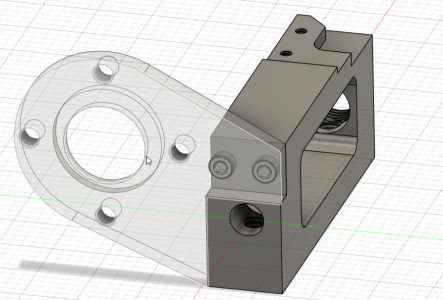- Joined
- Dec 10, 2023
- Messages
- 76
It will have a stepper motor hanging on the arm. It does not need strength. Rigidity of the 3/16 thick arm should be plenty.There is a lot going on with this part.
It would be helpful to know the intended use or at least tolerances. Is this part intended to be used in a wet environment, how much strength is required for the fasteners, etc. It appears that the 1/4-20 hole is partially in each of the two anticipated components. I would be inclined to use an aluminum braze, e.g. Miracle rod, for joining with two dowel pins for alignment. My understanding is the rod is a zinc alloy though, which might not be acceptable in a wet environment. Brazing will also destroy the temper in the aluminum so if strength is an issue, brazing may be a non starter.
Aside from that, a redesign of the part to enable machining from a single block may be the best answer for strength.
The current design is one piece. I have only started to think about separating them into two pieces as i dont think it required one piece part for strength. Making each piece separate i think will be easier, but again that is why i am asking those that have much more experience then i do.
Thanks!
Chad


